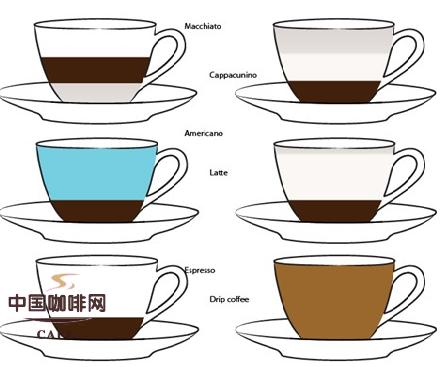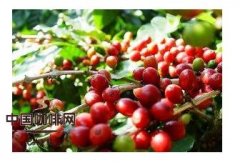The difference between Coffee and espresso

Coffee houses, cafes, or coffee shops crowded with people of all kinds are always good places for people to communicate or learn. The earliest use of coffee houses was to provide a place for wise men to discuss problems. Coffee houses used to be called penny universities because people paid a penny to enter and exchange information and ideas with all kinds of aspiring people.
The wooden coffeehouse of Charles II, 1674.
Today, you see today's wise people--usually college students--chatting in coffee shops from dawn to dusk with their cell phones and laptops in hand. Besides libraries, coffee houses are also the most popular places for college students to study and relax. You might walk into a college coffee shop and not buy anything, but you might end up thinking you should order something, especially if you're saving a seat and using free Wi-Fi for the day. But if you are new to coffee drinking, it is easy to get dizzy when you see the following scene:
Wow! So many choices! Different flavors, different sizes! What exactly should I order? What's the difference between a latte and a cappuccino? What if I pay $4 for a cup of coffee I don't like? When I felt overwhelmed with choices, I found a friend who used to work in a college coffee shop and helped me by explaining the difference between coffee and espresso.
The first thing she told me was about the difference between drip coffee and espresso. Drip coffee can be made at home with a coffee machine and filtered with hot water. Drip coffee is the most popular hot drink in American homes because it is as easy to make as tea. Almost every office and home has a drip coffee maker. Espresso, on the other hand, is coffee made by grinding water vapor, which is a method of making coffee. Any coffee bean or roast can be used to make pure espresso. Espresso coffee has a higher consistency, dissolved solids concentration, and a layer of coffee oil. (Coffee oil is a layer of overly colored stuff floating on top of coffee.) Because of the high-pressure brewing process, all the flavors and chemicals appear thicker when you taste coffee. For this reason, espresso can be used as a base for other drinks such as lattes, cappuccinos, macchiato and mocha.
In addition to knowing the difference between coffee and espresso, there are a number of words that describe the different ways espresso is made. As coffee becomes a part of your life, temperature, roasting, and amount of foam all become key to making the right cup of coffee. Let's take rice as an example. Some people prefer to steam rice, others prefer to cook, while others prefer to mix rice with other grains. Everything affects the taste and texture of the rice. There are many ways to make the same thing, and people love to make rice in different ways to suit their tastes.
Back to coffee, if you like foam, order cappuccino. If you prefer less foam, latte is your choice. If you don't like foam, then a latte without foam is best for you. Keep in mind that none of these drinks are sweet unless you add flavor syrup or add your own sugar. Drip coffee or espresso is a base for other drinks.
Latte: espresso, steamed milk, with a light layer of foam
Cappuccino: espresso, steamed milk, with a thick layer of foam
Macchiato latte: like putting latte in reverse, espresso in milk or frothy top
American coffee: espresso, hot water
French coffee: half ground, half steamed milk
Sweet or other flavored drinks contain syrup in their recipe, such as:
Vanilla latte: typical latte with vanilla syrup
Mocha: chocolate syrup, espresso, steamed milk
White mocha: white chocolate syrup, espresso, steamed milk
And of course there are many others. Since coffee in coffee shops is custom-made, it's fairly easy to ask the coffee shop staff to personalize your coffee. For example, if you want a sweet fruity drink, you can add raspberries to your white mocha. If you want more caffeine, try "red-eye" coffee, which is ground coffee with a bit of espresso. Remember that if you want more caffeine, an espresso contains a lot more caffeine than a regular coffee, but a large latte doesn't have as much caffeine as a large coffee. Explore and try so many options! If you are not satisfied with the original taste, most coffee shops in the United States will remake your drink. If coffee isn't your favorite, you can opt for a green tea latte or tea latte, both of which are tea-based drinks.
How to tell if you are drinking a good cup of coffee:
While my friend was training at the coffee shop, she learned the difference between hot milk and steamed milk. If you drink hot milk and steamed milk at the same time, the difference is obvious. Steamed milk is sweeter, smoother, and has more bubbles than hot milk. If milk is simply heated, it will have a strange animal taste, something like the taste people have when drinking goat milk. All of this will affect the quality of your coffee. If your taste buds aren't sharp enough to discern these differences, you can also judge the quality of the coffee by listening to the sound of it being made. Most coffee shops steam their milk with a steaming rod, which makes a scraping sound. But if you hear too many squeals, it means the clerk doesn't know how to steam milk properly, and you end up drinking hot milk.
Steamed milk is not only heated, but also adds a lot of air. This is a very important process for making drinks, and the scientific principles of it cannot be explained here. For example, when you hear James Bond order his martini, he says,"Shake, don't stir." You can also feel the difference in tea. Tea that has been shaken and exposed to the air will be sweeter and smoother than regular tea. In Malaysia, there is a type of tea, which is a drink mixed with concentrated milk, usually shaking two cups vigorously at a high place to make the drink have a thick foam, so that it tastes smoother than ordinary milk tea. Although the difference is not obvious, I can boldly say that the difference between good milk tea and ordinary milk tea lies in this.
My friend told me that during her training she tasted fresh and expired ingredients to understand the importance of making drinks with fresh ingredients. They asked her to taste small amounts of drinks that had been made for five seconds, ten seconds, and fifteen seconds. Fresh ingredients are black coffee colored and have a layer of coffee oil floating on top, and when it's stale, the whole material turns black. Within seconds, the espresso sediment separates, resulting in a bitter taste. One way to make raw materials timeless is to mix it with milk, water and syrup in 10 seconds. So espresso based drinks need to be made quickly. If you can't taste the difference, you can watch how the clerk prepares your coffee. When the ingredients are ready, count to ten. If he doesn't mix the ingredients in ten seconds, you're tasting a bitter, astringent drink.
Important Notice :
前街咖啡 FrontStreet Coffee has moved to new addredd:
FrontStreet Coffee Address: 315,Donghua East Road,GuangZhou
Tel:020 38364473
- Prev

Introduction to fancy Coffee
After repeated comparison and testing, premium espresso was blended and roasted with the highest compatibility with most coffee machines, with Brazil-Syrador Cerraado coffee as the base and high-quality coffee beans produced at high altitude in Central America. No coffee can match the richness and precision of pure espresso.
- Next

There are four types of coffee trees in the world.
Coffee comes from Ethiopian curry. In Colombia, it was brought by a priest from the French Antilles via Venezuela in 1808. At present, Colombia is the fourth largest coffee producer in the world, behind Brazil, Vietnam and Indonesia. Finally, I have an opportunity to witness the formation of coffee. This is a visit to QUINDIO, Colombia.
Related
- Beginners will see the "Coffee pull flower" guide!
- What is the difference between ice blog purified milk and ordinary milk coffee?
- Why is the Philippines the largest producer of crops in Liberia?
- For coffee extraction, should the fine powder be retained?
- How does extracted espresso fill pressed powder? How much strength does it take to press the powder?
- How to make jasmine cold extract coffee? Is the jasmine + latte good?
- Will this little toy really make the coffee taste better? How does Lily Drip affect coffee extraction?
- Will the action of slapping the filter cup also affect coffee extraction?
- What's the difference between powder-to-water ratio and powder-to-liquid ratio?
- What is the Ethiopian local species? What does it have to do with Heirloom native species?

